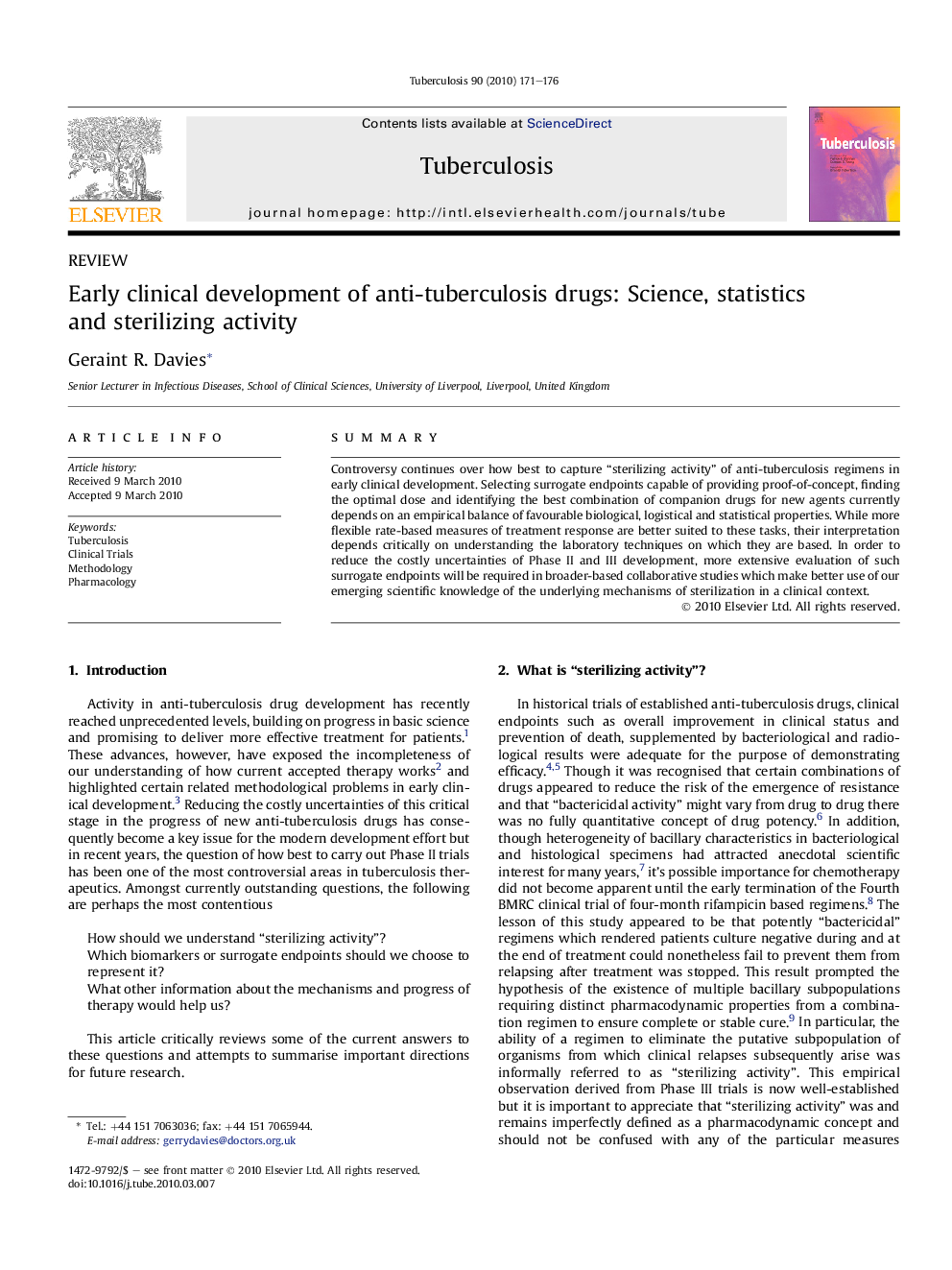| Article ID | Journal | Published Year | Pages | File Type |
|---|---|---|---|---|
| 2401750 | Tuberculosis | 2010 | 6 Pages |
SummaryControversy continues over how best to capture “sterilizing activity” of anti-tuberculosis regimens in early clinical development. Selecting surrogate endpoints capable of providing proof-of-concept, finding the optimal dose and identifying the best combination of companion drugs for new agents currently depends on an empirical balance of favourable biological, logistical and statistical properties. While more flexible rate-based measures of treatment response are better suited to these tasks, their interpretation depends critically on understanding the laboratory techniques on which they are based. In order to reduce the costly uncertainties of Phase II and III development, more extensive evaluation of such surrogate endpoints will be required in broader-based collaborative studies which make better use of our emerging scientific knowledge of the underlying mechanisms of sterilization in a clinical context.
